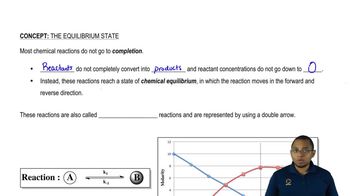Table of contents
- 1. The Chemical World
- 2. Measurement and Problem Solving
- 3. Matter and Energy
- Classification of Matter
- States of Matter
- Physical & Chemical Changes
- Chemical Properties
- Physical Properties
- Temperature (Simplified)
- Law of Conservation of Mass
- Nature of Energy
- First Law of Thermodynamics
- Endothermic & Exothermic Reactions
- Heat Capacity
- Thermal Equilibrium (Simplified)
- Intensive vs. Extensive Properties
- 4. Atoms and Elements
- The Atom (Simplified)
- Subatomic Particles (Simplified)
- Isotopes
- Ions (Simplified)
- Atomic Mass (Simplified)
- Periodic Table: Element Symbols
- Periodic Table: Classifications
- Periodic Table: Group Names
- Periodic Table: Representative Elements & Transition Metals
- Periodic Table: Phases (Simplified)
- Periodic Table: Main Group Element Charges
- Atomic Theory
- Rutherford Gold Foil Experiment
- 5. Molecules and Compounds
- 6. Chemical Composition
- 7. Chemical Reactions
- 8. Quantities in Chemical Reactions
- 9. Electrons in Atoms and the Periodic Table
- Wavelength and Frequency (Simplified)
- Electromagnetic Spectrum (Simplified)
- Bohr Model (Simplified)
- Emission Spectrum (Simplified)
- Electronic Structure
- Electronic Structure: Shells
- Electronic Structure: Subshells
- Electronic Structure: Orbitals
- Electronic Structure: Electron Spin
- Electronic Structure: Number of Electrons
- The Electron Configuration (Simplified)
- The Electron Configuration: Condensed
- Ions and the Octet Rule
- Valence Electrons of Elements (Simplified)
- Periodic Trend: Metallic Character
- Periodic Trend: Atomic Radius (Simplified)
- Periodic Trend: Ionization Energy (Simplified)
- Periodic Trend: Electron Affinity (Simplified)
- Electron Arrangements
- The Electron Configuration: Exceptions (Simplified)
- 10. Chemical Bonding
- Lewis Dot Symbols (Simplified)
- Ionic Bonding
- Covalent Bonds
- Lewis Dot Structures: Neutral Compounds (Simplified)
- Bonding Preferences
- Multiple Bonds
- Lewis Dot Structures: Multiple Bonds
- Lewis Dot Structures: Ions (Simplified)
- Lewis Dot Structures: Exceptions (Simplified)
- Resonance Structures (Simplified)
- Valence Shell Electron Pair Repulsion Theory (Simplified)
- Electron Geometry (Simplified)
- Molecular Geometry (Simplified)
- Bond Angles (Simplified)
- Dipole Moment (Simplified)
- Molecular Polarity (Simplified)
- 11 Gases
- 12. Liquids, Solids, and Intermolecular Forces
- 13. Solutions
- 14. Acids and Bases
- 15. Chemical Equilibrium
- 16. Oxidation and Reduction
- 17. Radioactivity and Nuclear Chemistry
15. Chemical Equilibrium
Chemical Equilibrium
15. Chemical Equilibrium
Chemical Equilibrium
Practice this topic
- Multiple Choice
Which one of the following statements does not describe the equilibrium state?
a. While at equilibrium, a dynamic process is still occurring.
b. The concentration of the reactants is equal to the concentration of the products.
c. The concentration of the reactants and products reach a constant level.
d. At equilibrium, the net concentration of all species is not changing.
e. All are true.
- Open QuestionWhat is meant by the term reversible reaction?
- Open QuestionWhat is meant by the term 'chemical equilibrium'? Must amounts of reactants and products be equal at equilibrium?

